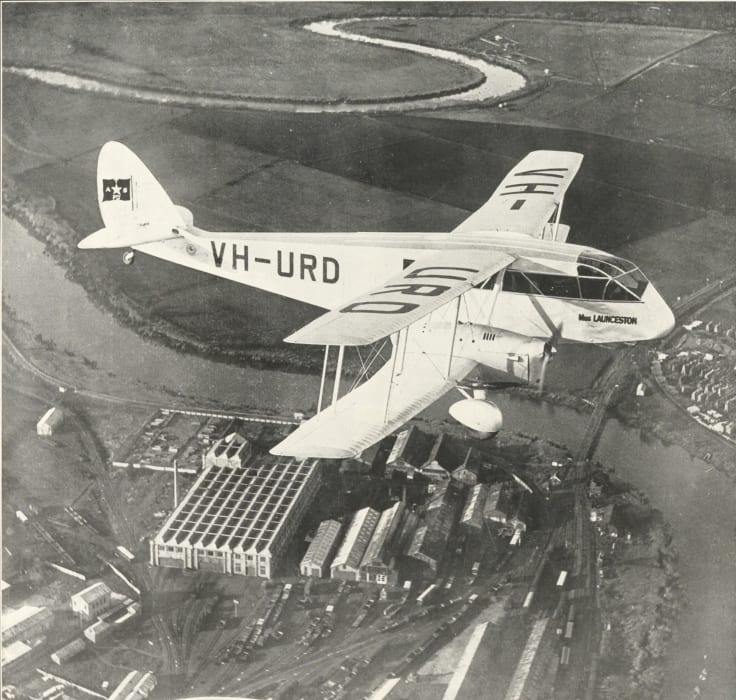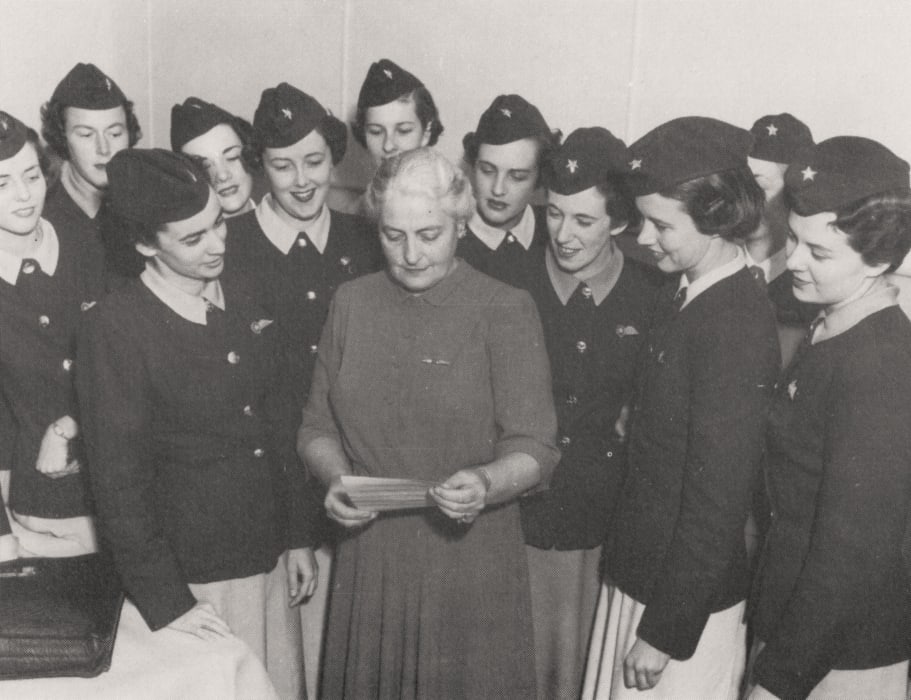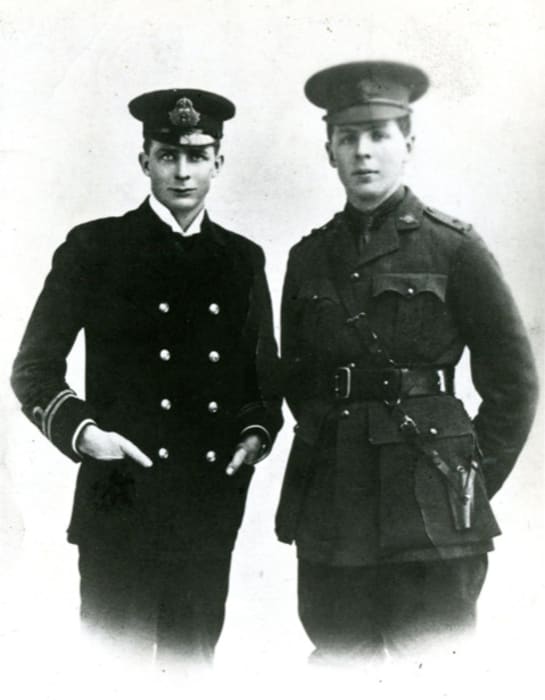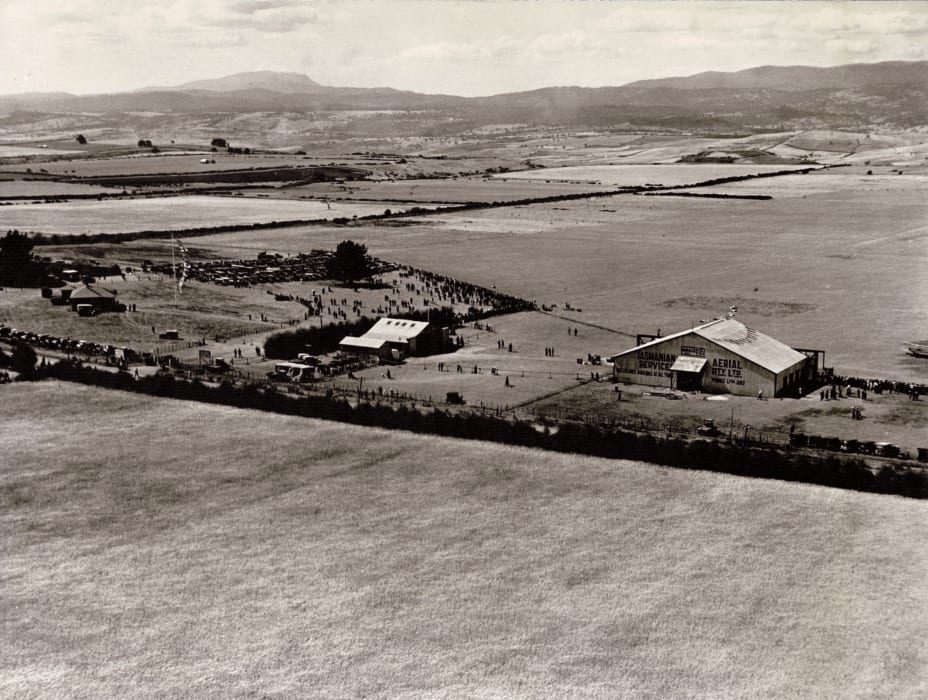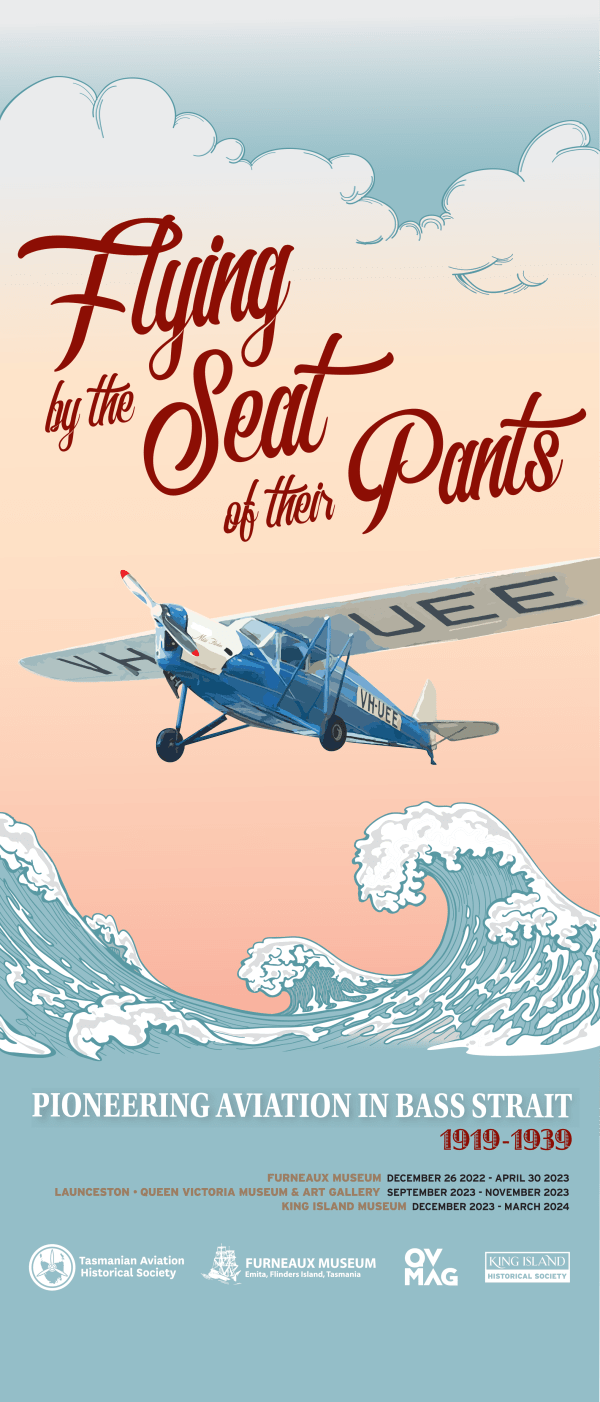 Today’s health and safety regulations would never have allowed the first aircraft to leave the ground. A new Furneaux Islands exhibition celebrates the dauntless daring of the pioneers of Tasmania’s aviation history.
Today’s health and safety regulations would never have allowed the first aircraft to leave the ground. A new Furneaux Islands exhibition celebrates the dauntless daring of the pioneers of Tasmania’s aviation history.
photographer HILARY BURDEN
historic photographs courtesy of the Tasmanian Aviation Historical Society and the Furneaux Museum
It’s 0700 hours and I’m at Bridport Airport. Boxes of freshly baked bread and fresh produce are loaded into the back of the Flinders Island Aviation GA-8 air van. Inside the hangar, the pilot takes our bags. “Today we’ll make a short freight stop at Cape Barren Island before Flinders,” he says. “Just a few minutes diversion – we’ll have you at Lady Barron shortly after that. Now, who’d like to sit up front with me?”
I’m one of just two passengers in the seven-seater, single-prop light aircraft – off to see friends and drop in on an aviation exhibition I’d heard was being installed at the Furneaux Museum. It is located at Emita (which is remote for Flinders Island, let alone Tasmania), and I’ve long been a fan. It’s one of Tasmania’s small and precious, volunteer-run museums, which number more than 100 state-wide.
My fellow passenger is on a working day trip, doing maintenance on the Flinders Island NBN connection. He hopes it won’t be too big a job and he can be home in time for dinner.
I opt to sit up front, and after assisting with the seatbelt and shoulder harness, the pilot warns me not to touch the control column in front of me, or the rudder pedals underneath my feet. In other words, try not to fly the plane.
And with that, we’re taxiing up the gravel runway.
Flying in a light aircraft is the antithesis to modern aeroplane travel. No queues or conveyor belts, no airless seats with Zombie screen seatbacks, no hard-sell shopping trolley or annoying PA announcements. It might not be for everyone, but it’s my version of glamour. It’s as close to flying a plane as you can get. And everyone gets a window seat.
The Bridport to Lady Barron flight takes just under an hour and follows the north-east coastline and massive sweeping sand dunes of the Waterhouse Conservation Area. Cape Portland’s windfarm turbines are visible to the east as the pilot sets a flight path (altitude 1,000ft) for the airstrip at The Corner on Cape Barren Island. The tiny plane shadows itself on a blissfully calm Banks Strait, dipping its wings above the golden sands and aqua water of Thunder and Lightning Bay, and hills dotted with tea tree and she-oaks. To our west, Mt Strzelecki’s bubbling peaks are clearly visible.
At Cape Barren airstrip, a small hut with hand-carved timber sign announces that we’ve arrived at Reg Munro Airfield, upgraded recently with a gravel runway. A parked tractor is the only vehicle, and there’s a new shed called the Peter Hay Rest Room. We remain seated as two men arrive by 4WD to collect today’s deliveries, briskly done. In the blink of a radar we take off again, flying over Franklin Sound and the scenic view of daydream islets and fishing boats, empty beaches and true-blue waterways.
At Lady Barron township on Flinders Island, the air van’s wheels bounce like a summer cloud off the paddock airstrip, marked out by two army-neat rows of white-painted tyres, shining like beacons. Lady Barron tells the time by the once-a-week boat service, and the sound of planes taking off and landing. The GA-8’s engine noise is surprisingly comforting, a reminder of connection in this place as isolated as any remote area in Australia (population about 900, with roughly one person per two square kilometres).
Arriving by plane either here at Lady Barron or in Whitemark is character-forming for islanders whose deal is to submit to a life controlled by the elements and climb into small planes that land in a paddock by the edge of the sea – as easily as catching a Metro bus.
It’s entirely fitting that a significant part of the aviation story in Tasmania is being told by an exhibition called “Flying by the Seat of their Pants”, and that the rich collaboration between the Tasmanian Aviation Historical Society and the Furneaux Museum was officially opened (on January 14, 2023), by local celebrity Nick Duigan.
The former TV presenter, fisher and now MLC for Windemere, Duigan is a graduate of the flying-by-the-seat-of-their-pants school of aviation, having grown up on Flinders in the 1970s flying ultralights, “crashing into hillsides and all of that”, going off to boarding school in a De Haviland Heron, the semi-surplus World War II aircraft that once flew regularly in and out of Flinders. Duigan recalls how he and his late father, John Duigan, “a mad keen aviator, Red Baron kind of thing”, made headlines when they survived crashing their plane into a hill on Flinders Island more than 10 years ago. Nick’s grandfather, Reg, and Reg’s brother, John Duigan, built the first aeroplane in Victoria out of lengths of mountain ash bound together with wool bale straps, inspired by a photo-postcard of the Wright Flyer. John went on to have a distinguished World War One flying career and was a pall bearer for the real Red Baron.
Far from being a gratuitous celebrity, Nick Duigan’s role in opening the exhibition could not have been more perfectly cast.

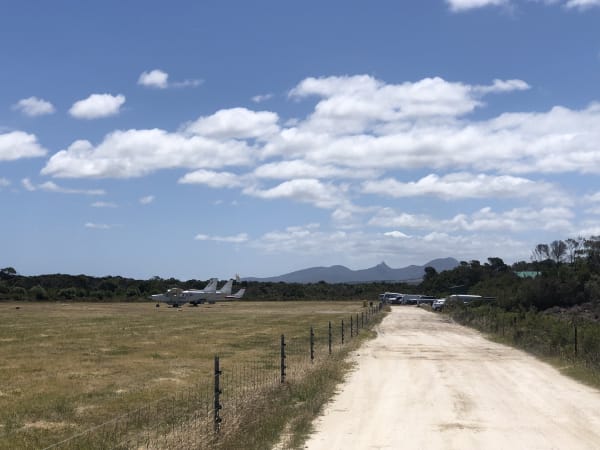
The Tasmanian Aviation Historical Society (TAHS) was formed in 2019 to highlight Tasmania’s part in Australia’s aviation story. Already celebrated facts are that aviation pioneer Harold Gatty, navigator on the first around the world flight, was born in Campbell Town, and Launceston-born Hudson Fysh co-founded Qantas. Tasmania also played a part in the development of Australia's commercial aviation industry with the Holyman family founding a small commercial airline flying between Launceston and the Bass Strait islands that went on to become ANA, once Australia’s largest domestic airline.
But it’s the history of Bass Strait aviation, specifically 1919-1939, that is the exhibition’s focus – a period the TAHS acknowledges as being full of record-making firsts: the first aviators lost crossing Bass Strait; the first plane to land on Flinders and King Islands; the first crash landing on Deal Island; the first Tasmanian commercial airline.
Daring pilots faced extraordinary challenges flying at low altitudes in open cockpits, taking off from and landing in nothing more than a paddock.
Andrew Johnson, president of the TAHS, grew up hearing Boys’ Own, daredevil stories. His grandfather was Tasmanian aviator Lawrence Mackenzie Johnson who founded, owned and operated Flinders Island Airways, the first commercial passenger and freight service between Western Junction and Flinders Island (before being bought by the Holymans). With “Miss Flinders”, a Dessoutter VH-UEE bought with £1,000 of his father’s money, Laurie Johnson’s one-man-band made the island’s first mail deliveries in 1932. Miss Flinders now hangs like an angel from the ceiling at Launceston Airport.
Lawrence Johnson may never have known that the results of his courageous endeavours as a 28-year-old would be in such safe hands in 2023 with his grandson, Andrew, also perfectly cast as a former exhibition and conservation manager at Launceston’s Queen Victoria Museum and Art Gallery. We can wonder at the call of Andrew’s ancestral destiny, shaped by the spirit of his grandfather whose weather-worn leather flying helmet and goggles are in his safe-keeping, nurturing a family legacy that is also Tasmania’s.
How the exhibition came into being is such a story of serendipity that it’s been invited to be presented by Arts Tasmania roving curator Melissa Smith at a national museum conference in May 2023.
It all started as a problem. Without the resources of a physical museum, there was nowhere to display the stories and memorabilia TAHS’ 50-plus membership was uncovering about the island state’s rich, scantly-known aviation history. Under the auspices of an Arts Tasmania program, solving the conundrum “took on a life of its own”, says Melissa Smith. A partnership between TAHS and the Furneaux Museum was formed. A series of novel Zoom meetings (thanks Covid) held over 18 months helped bring the groups together. From there, the decision to skip the bricks and mortar museum route and go on the road as a travelling exhibition was conceived and birthed.
“What we’ve tried to get across,” says Andrew Johnson, “is the bravery and courage of these early pilots who were flying in really simple aircraft made of timber and fabric and a few wires with pretty basic engines and very few instruments. There was no weather forecasting, so the weather is what they saw. It was all by feel. A slide, a skid or yaw was best felt through your bottom on the seat. That feel was literally experienced in the seat of your pants.”
Johnson has transferred that feel into the exhibition design itself, with its plywood, aluminium, steel wire and canvas construction, and a central structure modelled on the fuselage of early aircraft.
In Fiona Stewart, a Flinders Island-based professional graphic designer, central casting was complete. She remembers her father, Dr Robert Stewart, a flying doctor to Cape Barren Island for 30 years, “sometimes having a fly”, landing in those days on the runway with Reg Munro, “a famous pilot in that era”.
It’s only since working on the exhibition design that Stewart has realised her dad was actually a qualified pilot. “I thought it was the ‘80s, it was ‘the wild west’, he flew the plane, that sort of thing happened over here, but I found out only recently that he actually got his pilot’s license. He was officially a flying doctor!”
Following Andrew Johnson’s brief, Fiona Stewart took her inspiration from 1930s aviation posters and an old aviation advertisement produced by Bowman’s store, a Whitemark retailer that celebrated its 100th anniversary in 2022. The old-school advertisement uses the sloping font of a different era. “The ad came from Flinders. It’s as local and authentic as it gets,” Stewart says.
Meanwhile, TAHS founding member Chris Byrne, who researched and wrote the exhibition text, was part of the team that established the Launceston Distillery when they took over the lease of historic Hangar 17 at Launceston Airport. The hangar was built by the Holymans in the early 1930s and once housed Miss Flinders, Miss Currie and other early aircraft.
The recorded history – of a time when many Tasmanians would never have seen a plane let alone flown in one – is meticulous. And without the family histories collected by the Furneaux Museum over many years, the telling would not have been quite as rich. This was an era when passengers stuffed their ears with cotton wool and ate two Minties for the trip. When Norman Chapman, an early pilot, crash landed on Flinders Island and walked to the beach to find driftwood to repair his plane. When islanders received letters marked “Air Mail” and revelled in being able to read a newspaper on the same day it was printed.

The travelling exhibition, “Flying by the seat of their pants” flies out of Flinders in April and lands at Launceston’s Queen Victoria Museum and Art Gallery in September 2023 – with possible additions to the content, including more contemporary stories.
Hilary Burden is a British/Australian author, journalist and photographer. She lives and writes from a shack on an acre in the low hills of Swansea. Her memoir, A Story of Seven Summers - Life in The Nuns’ House, was published in 2012 by Allen & Unwin. More of her photography can be seen on Instagram, @hilaryburden.

